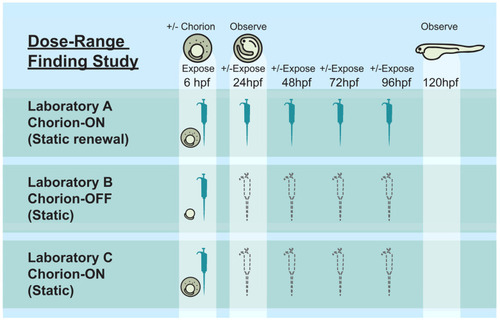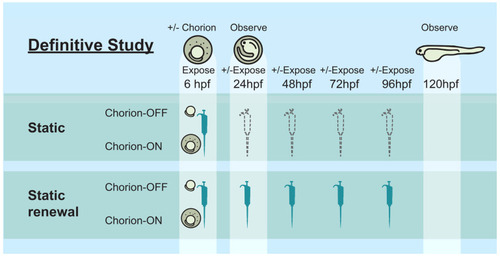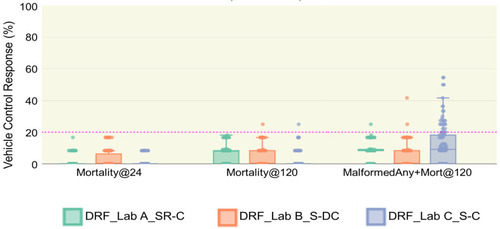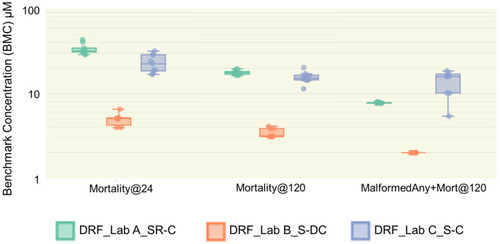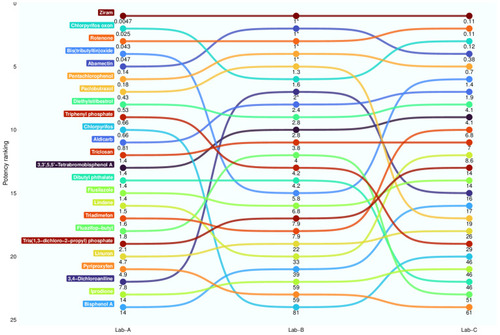- Title
-
Interlaboratory Study on Zebrafish in Toxicology: Systematic Evaluation of the Application of Zebrafish in Toxicology's (SEAZIT's) Evaluation of Developmental Toxicity
- Authors
- Hamm, J.T., Hsieh, J.H., Roberts, G.K., Collins, B., Gorospe, J., Sparrow, B., Walker, N.J., Truong, L., Tanguay, R.L., Dyballa, S., Miñana, R., Schiavone, V., Terriente, J., Weiner, A., Muriana, A., Quevedo, C., Ryan, K.R.
- Source
- Full text @ Toxics
|
DRF study overview. Schematic representation of the DRF study. Embryos were exposed at 6 h post fertilization (hpf) and, in the case of static renewal, at 24, 48, 72, and 96 h post fertilization (hpf) after the initial exposure. Lab A used chorionated embryos and renewed dosing solutions every 24 h (DRF_Lab A_SR-C). Lab B removed the chorion and used static exposure (DRF_Lab B_S-DC). Lab C used static exposure of chorionated embryos (DRF_Lab C_S-C). |
|
Definitive study overview. Schematic representation of the Def study. The three laboratories participating in the study exposed embryos under four exposure conditions, including static exposure, renewal of exposure media every 24 h, using both chorionated and dechorionated embryos. |
|
Mortality and altered phenotypes for vehicle-control-exposed embryos. The distribution response (%) of three endpoints ( |
|
Distribution of BMCs for the positive-control-exposed embryos. The distribution of BMCs for three endpoints ( |
|
Comparison of potency for 24 test substances active at all laboratories. The bump chart is based on potency ranking of substances that produced phenotypic alterations or mortality (the |

